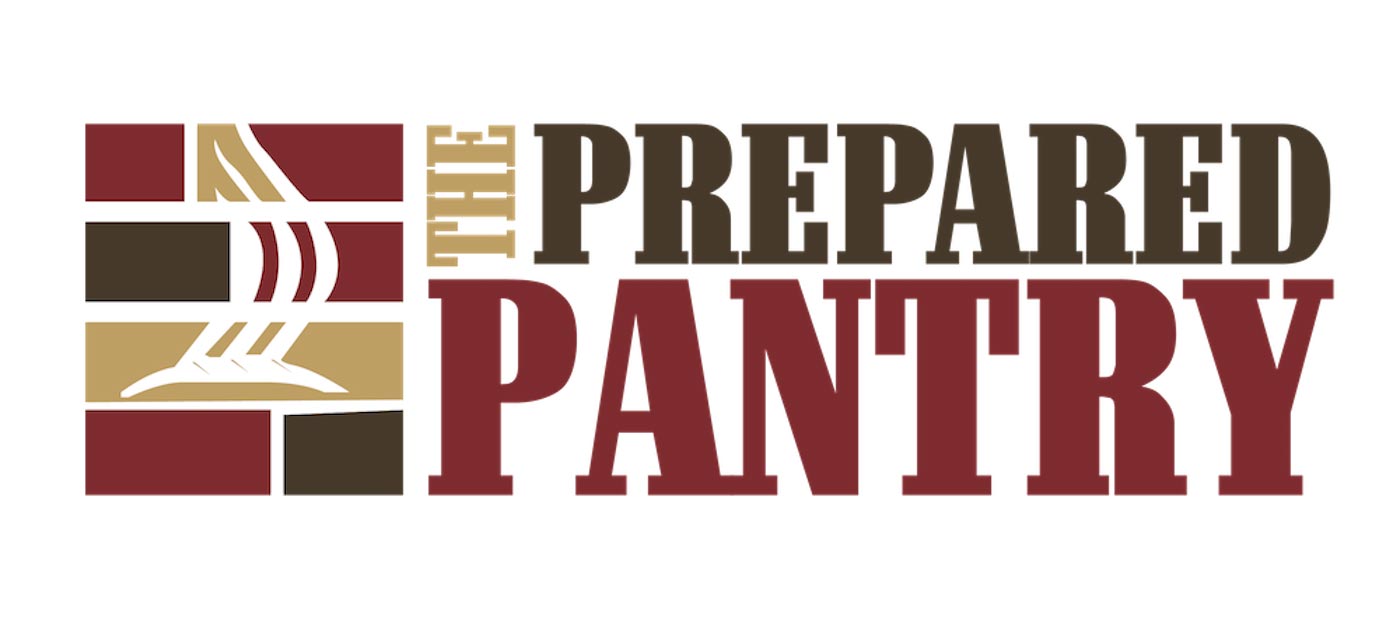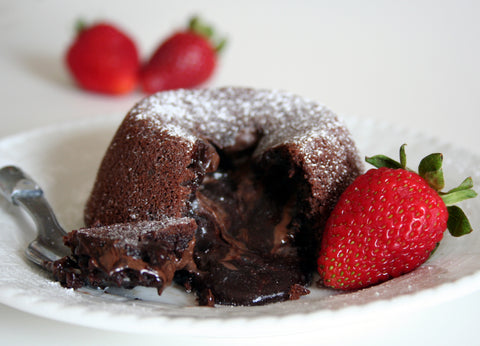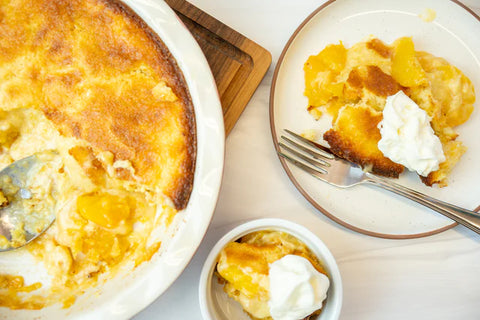This is an advanced lesson in lava cakes. You can make fine lava cakes with our Molten Chocolate Lava Cake Mix or with Chocolate Lava Cake Recipe but if you want to be an expert, read this article.
Types of Lava Cakes
When we started our lava cake project, we were looking for not only the best tasting lava cake but the most practical recipe. We would then use that recipe as a template to create variations on the type. So we gathered promising recipes and started baking.
Lava cakes come in two forms. The most common are little pudding cakes. They’re dense chocolaty cakes with the centers still molten and oozing—unless you bake them too long, which we did on several occasions. Then you just have dense chocolate cakes.
The second type of lava cake has a chocolate center instead of a batter center. Quality chocolate is nestled in the batter to melt during baking. The centers are real chocolate, and the baking time is not as critical. Our lava cake mix is this type with fine chocolate for the centers.
How to Tell When Your Lava Cake is Baked
Pudding cake-type lava cakes are simple and very good. You just have to watch the bake time carefully. Very quickly you’ll learn to tell when they are done but here are the signs that they are baked.
- The edges of the cakes become firm while the center is jiggly.
- A toothpick stuck in the cake a half inch from the edge comes out clean.
- Some of the cakes start to rise above the pan with sharp edges protruding. The edges don’t always protrude, but if they do, the cakes are done.
If, after examining the cakes, you decide they are not quite done, you can put them back in the oven for another two minutes.
Most of our cakes were baked in eight to nine minutes. The exception was a strawberry white chocolate cakes. Because the batter included partially frozen strawberry pieces, these took longer to bake.
Preparing Your Pan
Warm lava cakes are somewhat fragile since the centers are molten. A good nonstick muffin pan is essential along with properly greasing each muffin cup.
Before putting the cake batter into the muffin tin, wipe softened butter into each cup with a paper towel or basting brush until each cup is entirely covered with butter. Then sprinkle granulated sugar over the pan covering each cup completely, shaking the pan if needed to distribute. Shake out excess sugar.
Removing Your Lava Cakes from the Pan
Once your lava cakes have finished baking and cooling slightly, run a thin-bladed silicone spatula along the edges of each muffin cup. Once they are free from the pan, you can carefully lift the desserts from the pan.
But here is a slick trick that we have used for hundreds of desserts for many years. It's especially applicable for lava cakes since the cakes are inverted for serving,
Once they finish baking and cooling for 3-5 minutes Place a cutting board or cookie sheet over your muffin tin.
Hold the cutting board and the muffin tin together and flip it over.
Hold the upside-down muffin tin and cutting board 6″-8″ above the counter and drop it abruptly. Slowly lift the muffin tin off the cutting board slightly jiggling it if necessary. If you see some cakes sticking, put the muffin tin back over them and drop it again.
Voila! Perfect lava cakes!
So how do you top the lava cakes?
Traditionally, lava cakes are topped with whipped cream or ice cream. We made three sauces to go with the three recipes: a raspberry sauce for the dark chocolate cakes, an orange marmalade sauce for the orange white chocolate cakes, and a strawberry sauce for the strawberry cakes. We have included recipes for the sauces with the cake recipes.
We're working on the recipes for the orange and strawberry lava cakes. We'll publish them shortly. --Dennis


 Nathan Hawkes
Nathan Hawkes




Comments (0)
There are no comments for this article. Be the first one to leave a message!